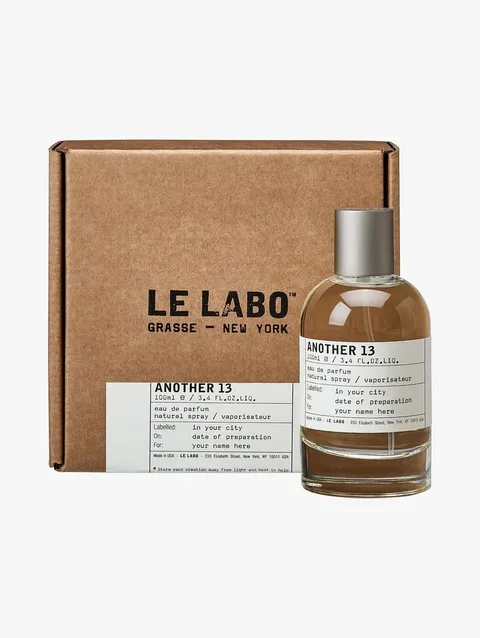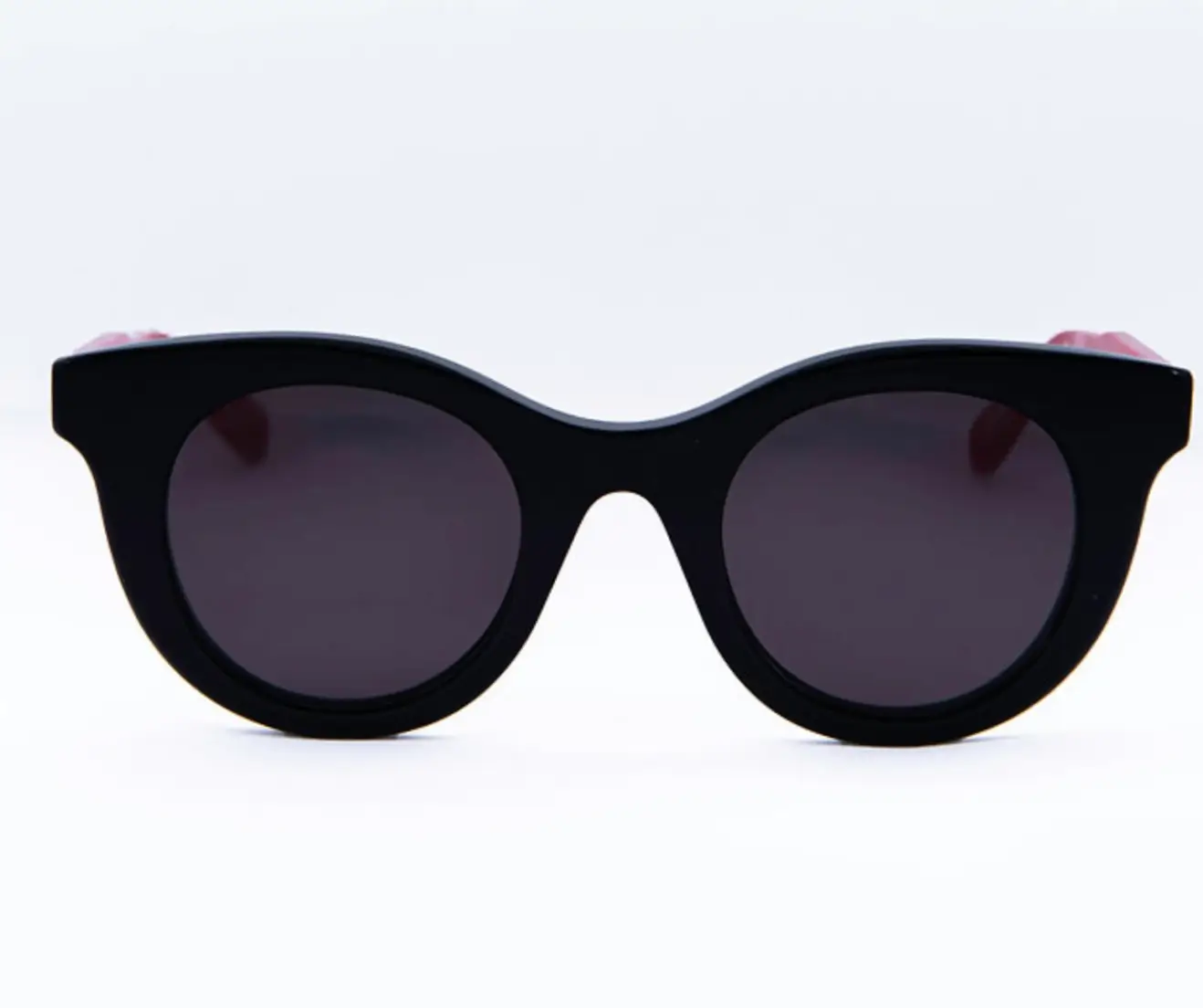alchemy
The story of Le Labo’s AnOther 13 begins in a moment of creative cross-pollination rather than corporate planning. In 2010, AnOther Magazine approached Le Labo with a request that felt almost mischievous: create a scent that expressed the publication’s identity, a perfume that didn’t shout but whispered, that didn’t follow but led from the backdrops. What emerged from that commission—crafted by perfumer Nathalie Lorson—would become one of the most iconic fragrances of the 21st century.
The magazine itself, known for its avant-garde fashion narratives and cultural sensitivity, sought a scent that could occupy the same modern, elusive space as its editorial vision. The connect was never meant to produce a bestseller or a global staple. It was meant to be an artistic object, a fragment of olfactory editorial just as considered as a cover story or a photographic series.
Yet the fragrance that emerged, built around the synthetic musk molecule ambroxan, didn’t stay in the margins. It leaped from insider secret to international phenomenon, carried not by marketing muscle but by the near-mythical magnetism of its smell. AnOther 13 would become proof that some of the most enduring cultural objects are born quietly, almost accidentally, only to find their audience through intuition and desire.
min
When AnOther 13 launched, the perfume industry was still wrestling with the aftermath of the early 2000s: heavy sweetness, loud sillage, maximalist branding. The err of gourmand dominance was peaking, and celebrity perfumes were leaving their unmistakable trail through department store aisles. But a countercurrent had begun to form. Minimalism was emerging across fashion, design, and culture, and the idea of “quiet haute” was finding its way into conversations long before it became an Instagram hashtag.
In that shifting moment, AnOther 13 felt like the future arriving early. The scent took a radically different approach to sensuality: instead of projecting outwards, it pulled the wearer inward. Instead of layering florals and spices, it relied on the shimmering transparency of ambroxan, supported by the soft radiance of jasmine, the cool dryness of moss, and the delicate musk of ambrette seed absolute.
It smelled clean, but not sterile. Skin-like, but not faint. Modern, but not futuristic in a cold way. It smelled like the photographic negative of a traditional perfume—an atmosphere rather than a formula. A sensation rather than a story.
This shift aligned perfectly with the cultural mood to come. As minimalism took deeper root, as natural-finish makeup surged, as fashion slid toward clean lines and unfussy silhouettes, AnOther 13 emerged as the scent equivalent of that understated elegance. It crystallized a new form of perfumed identity: the desire to smell like oneself, but better.
View this post on Instagram
the molecule
Ambroxan is one of the most transformative ingredients of contemporary perfumery. Originally inspired by ambergris—one of nature’s rarest and historically most luxurious materials—it offers an abstract interpretation of warmth, musk, and mineral clarity. It glows. It radiates. It behaves with a subtlety almost alien to classical perfumery.
Where many scents are built in layers, ambroxan behaves like a skin-synchronous halo. It doesn’t open dramatically or dry down theatrically. Instead, it shifts. It expands. It becomes something different on each wearer, responding to body heat, chemistry, environment, and even fabrics.
AnOther 13 was one of the first fragrances to place ambroxan at the center of the composition rather than using it as a structural support. With that single creative decision, the scent broke from tradition and ushered in what would become a genre-defining movement.
Countless perfumes have since followed its lead, exploring the terrain of clean musks, airy woods, and subtle skin scents. Yet few achieve the balance of softness and clarity that AnOther 13 delivers. It remains the definitive expression of ambroxan as an artistic medium rather than a utilitarian material.
xp
Trying to describe the smell of AnOther 13 often leads to metaphors rather than descriptors. It behaves more like atmosphere than fragrance. Spray it on skin and it opens with a quiet shimmer—clean, faintly mineral, slightly musky, warm but never cloying. There is a sense of fresh linen without crispness, of warm skin without sweetness, of something lived-in rather than applied.
As it settles, its texture becomes almost tactile. The jasmine contributes a faint floral breath without signaling “floral,” the moss offers a muted coolness, and the ambrette introduces a natural muskiness that feels intimate rather than animalic. Ambroxan holds everything in suspension, allowing the fragrance to expand without showing its architecture.
The real magic is in how differently it behaves from person to person. On some, it becomes creamy. On others, metallic. On others, airy and nearly invisible. But in every case, it refuses the traditional narrative arc of perfumery. It doesn’t evolve through top, heart, and base—it simply becomes you. The smell of skin perfected. A ghost of a memory you half-recognize. A presence more than a perfume.
stir
Before AnOther 13 became globally accessible, it remained a kind of secret handshake within the creative industries. Editors wore it because it didn’t compete with the environment of photoshoots or runway spaces. Stylists wore it because it rested closely on the skin and didn’t project into clothing. Photographers wore it because it didn’t announce itself on set.
Slowly, it spread through art schools, fashion circles, music studios, design agencies, and the kinds of cafés where ideas begin. It became the scent you recognized but couldn’t identify. The fragrance of “you smell incredible, but I can’t place it.”
This aura of anonymity became part of its mythos. The scent never revealed itself fully; it remained elusive. The people who wore it often liked it that way. It was a fragrance for individuals who preferred subtle impact over attention, who believed that the most interesting things are often the quietest.
social
When Le Labo increased its availability, making AnOther 13 accessible beyond its initial city-exclusive status, there was a risk that the fragrance might lose the mystique it had built. Yet its appeal continued, and for a simple reason: the scent was not about exclusivity—it was about identity.
As it moved into cities around the world, it carried with it a certain universality. It smelled as relevant in Tokyo’s neon modernity as it did in London’s editorial corridors or Los Angeles’ creative enclaves. It slipped seamlessly into different atmospheres without losing its core essence.
This adaptability helped solidify its reputation as a modern classic. It became the fragrance equivalent of a well-tailored white shirt—the kind of essential that works in every context but never feels generic. It remains unmistakable, even when it’s impossible to define.
why
Fifteen years after its release, AnOther 13 remains one of the most influential scents in contemporary perfumery. While trends have cycled through gourmand revivals, nostalgic florals, gender-neutral woods, and molecular experimentation, this fragrance has never gone out of style. Its persistence speaks to the timelessness of its structure.
The modern appetite for subtlety continues to grow, especially in fragrance. People no longer seek to overwhelm a room; they seek to leave a trace, an impression, a mood. AnOther 13 embodies precisely that desire. It reflects a cultural shift toward intentional presence—less about display, more about authenticity.
The fragrance speaks to the current ethos of personal luxury, where refinement lies in restraint, where intimacy is more alluring than spectacle, where the scent one wears feels like a part of one’s biography rather than an accessory.
phil
Le Labo’s packaging has always been part of its ethos, and AnOther 13 embodies that aesthetic completely. The hand-labeled bottle, the pharmacy-style typography, the utilitarian glass, and the stainless steel cap all communicate a sense of crafted care. The personalization—the addition of your name and date—turns each bottle into a small ritual.
This simplicity is not an afterthought. It’s an extension of the scent itself: minimal but intentional, quiet but characterful. The bottle asks for nothing but delivers everything. In a world of ornate flacons and decorative extravagance, Le Labo’s industrial aesthetic feels refreshingly honest.
idea
The deeper cultural significance of AnOther 13 lies in what it represents: the shifting idea of how we want to smell in the 21st century. Fragrance used to be about adornment—florals, spices, dramatic accords, and loud statements. AnOther 13 redefined that expectation. It suggested that the most compelling scent might be the one that melds with you so closely that no one can quite tell where you end and it begins.
This is not perfume as mask or costume. It is perfume as presence. Perfume as identity. Perfume as something deeply and quietly one’s own.
fin
AnOther 13 is not a fragrance that demands attention, yet it receives it. It is not a perfume that asks to be recognized, yet it becomes unforgettable. It occupies a space few scents ever reach—an object of affection, a cultural signifier, a sensory mood board of modern life.
Its longevity is rooted in its honesty. Its impact is rooted in its subtlety. And its legacy remains intertwined with its origin story: a scent born from editorial curiosity that became a defining emblem of contemporary olfactory taste.
AnOther 13 endures not because it dazzles, but because it lingers—quietly, intimately, unmistakably. It is the whisper that haunts, the trace that remains, the scent of modernity captured in a bottle.
No comments yet.










